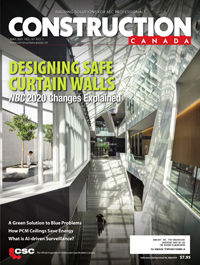Sustainable Roofs: What does “green” really mean?
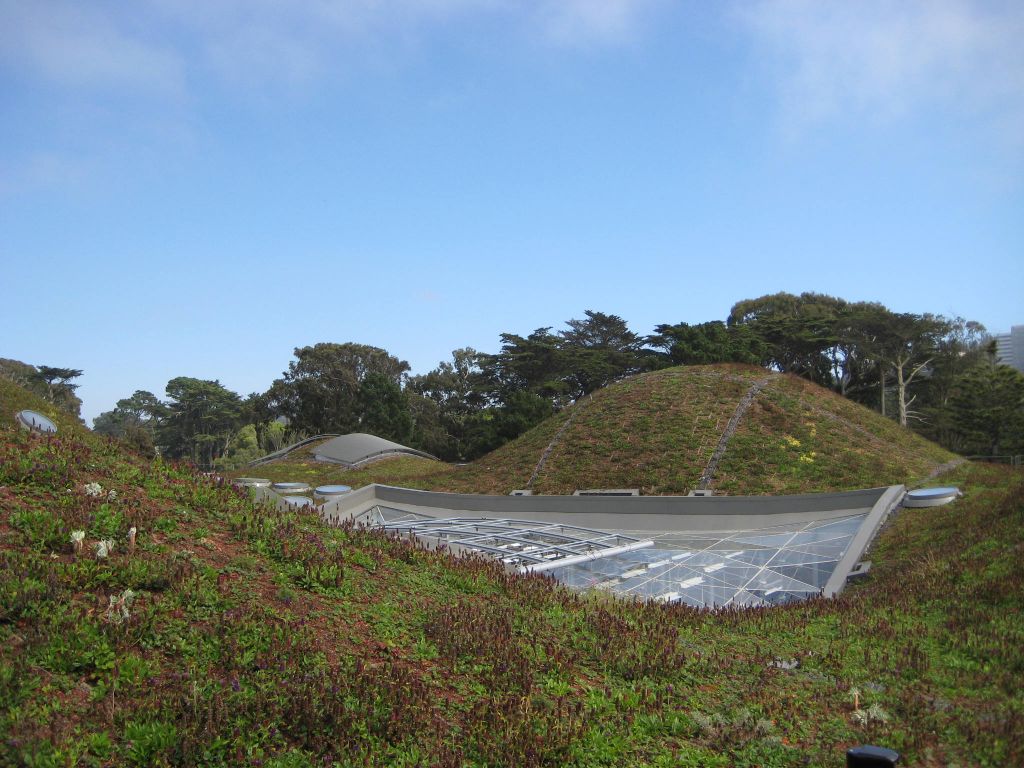
By Eric K. Olson, PE
Over the past decade, the North American construction industry has embraced sustainability in construction and building operation as environmental impacts have gained the attention of building operators, code-development organizations, and the general public.
Sweeping changes to construction and building operations, focusing on reducing energy usage, mitigating loss of outdoor space, and minimizing construction waste, have fundamentally changed the manner in which buildings are constructed and operated. These widely held principles of sustainability, when applied to roofing assemblies, have translated into improving energy efficiency through:
- enhanced insulation and increased roof surface reflectivity;
- increased use of recycled material content; and
- use of less-toxic materials in the assembly.
End-users may also demand a ‘green’ roof—use of the roof surface for features deemed sustainable, such as vegetation and public gathering space, photovoltaic (PV) arrays, and rainwater retention. Many of these roof features and uses have been shown to reduce energy consumption or otherwise provide some environmental benefit. However, green demands often draw attention away from the primary purpose of the roof—to protect the building from the outdoor environment—and can force compromises in the roof system leading to failure and consequential damage to other building components.
Sustainable design
Roof failure may necessitate early, unplanned replacement of the system and damaged building components, which has negative environmental impacts. If the expense of installing vegetation, PV arrays, or other features on the roof has been undertaken, their removal and reconstruction may be required to correct underlying problems, adding to the environmental (and economic) impact.
In 2001, the Joint Committee on Roofing Materials and Systems, CIB W083/RILEM 166-MRS, issued Publication 271, Tenets of Sustainable Roofing, which defines 21 key aspects of sustainability related to roofing, divided into the following three categories:
- minimize burden on the environment;
- conserve energy; and
- extend roof lifespan.
These tenets are inseparable and must be considered and implemented together.1
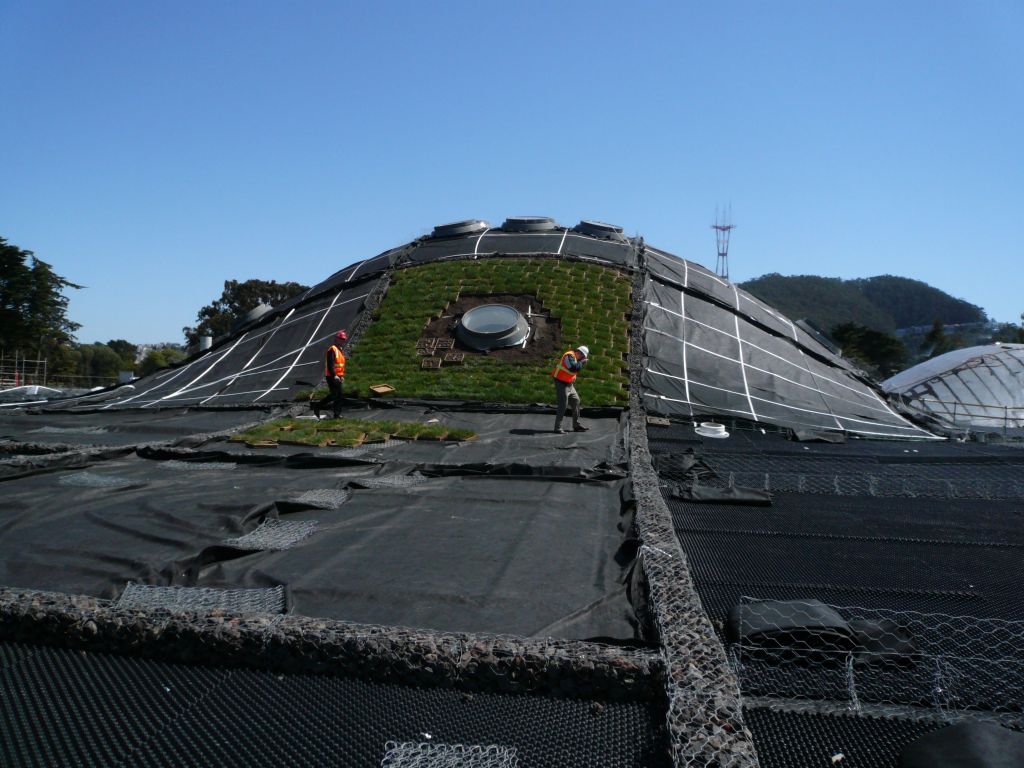
Energy conservation through reduction in consumption due to enhanced roof reflectivity and increased insulation may be calculated or estimated using tools available from Oak Ridge National Laboratory (ORNL) Building Technologies and Research Integration Center2 or predicted by whole-building energy models. Other aspects of minimizing burdens on the environment due to the roof or its uses have also been studied.
For example, a study on the rate of atmospheric carbon sequestration in plants on extensive roof coverings (i.e. vegetative coverings with shallow growth media and low-maintenance, low-growing plants) appearing in Environmental Science Technology3 shows the average carbon sequestered (i.e. weight of carbon in atmospheric carbon dioxide captured by plants) on an extensive vegetative roof in its first two years is 375g/m2 (7.7 lb/100 sf). An intensive vegetative system with deep planting beds, shrubs, and trees is likely to sequester more atmospheric carbon in the long term, but requires deeper soil, additional structural support, and frequent landscaping and maintenance, which will have negative environmental impacts offsetting the added sequestration benefits.
It is not straightforward to determine the environmental benefit of roof longevity by considering impact of premature roofing failure and, as a consequence, replacement of damaged roofing and building components. It will depend in large part on the extent and nature of the damage and required repairs, and associated environmental impacts of extracting, manufacturing, shipping and replacing, and disposing so many damaged elements. Such considerations are generally beyond the control of the original roof designer.
It should be noted the approximate weight of carbon released by a roofer’s vehicle making a daily 96-km (60-mi) round trip to replace a roof (assuming a 6.38 km/l [15 mpg] pickup truck) is 18 kg (40 lb) daily. If work progresses at roughly 37 m2 (400 sf) of roofing replaced daily per roofer, the reroofing activity embodies about 4.5 kg (10 lb) carbon per 9.3 m2 (100 sf) of roofing. Under this scenario, transportation of labour to replace a roof would negate the benefit of carbon sequestration in an extensive roof having the same area, as discussed above.
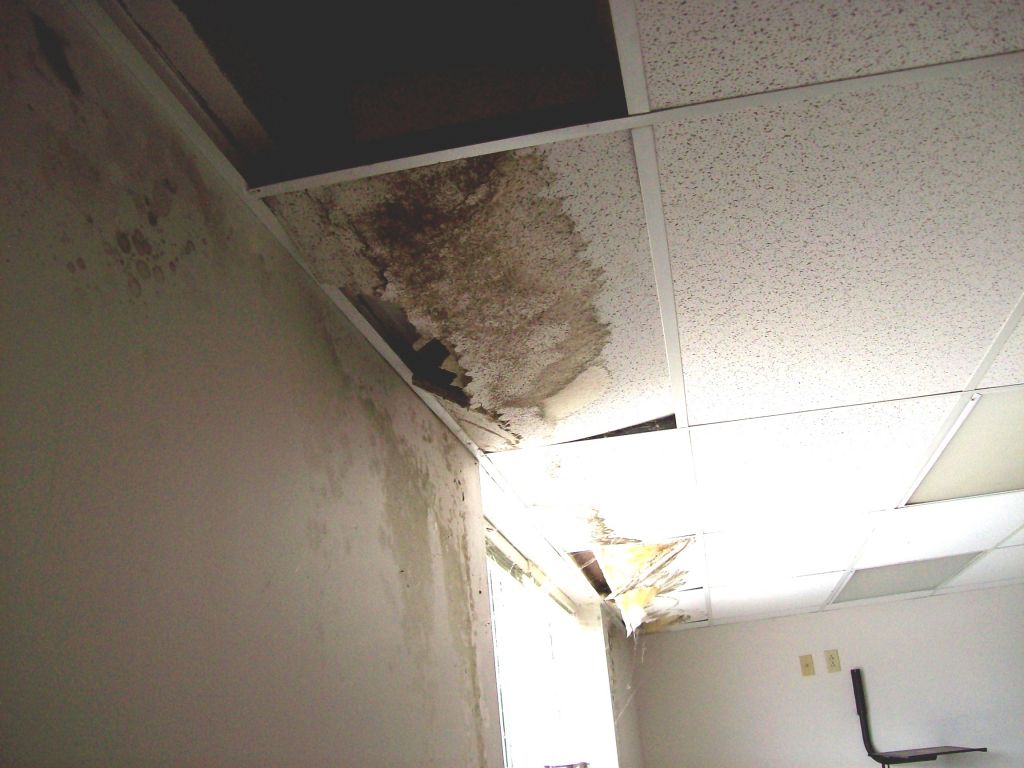
The negative environmental impact of roofing failure can be substantial. Rarely discussed and difficult to quantify, impacts are those related to the building’s function. Disruption to the interior building environment can adversely affect the building owner, occupants, and managers, creating inconvenience and less-than-ideal working or living conditions. Negative potential health effects of mould-contaminated materials may also become an issue.
It is also important to be vigilant in regards to ‘greenwashing’ in terms of sustainable roof construction. Greenwashing can be defined as expressions of environmentalist concerns especially as a cover for products, policies, or activities.4 In other words, companies entice consumers with claims of environmental friendliness to push products. A well-known example is marketing of plug-in electric cars as “zero emission.” This is only accurate, however, when the electricity is from non-emitting sources, otherwise the carbon is merely emitted in different locations instead of reduced. The reader is cautioned to beware of unfounded green claims with respect to roofing and materials.
Use of new materials, which may be marketed as ‘green’ but do not have a track record, can reduce durability. This is also becoming a concern as recycled content of roofing materials increases and solvent contents of adhesives and coatings drops, yielding new yet untested formulations for these materials.
Catastrophic roofing failure—often caused by insufficient resistance to wind or snow, widespread material failure, or poor workmanship—can cause extensive damage to materials inside the building. The environmental impact to dispose and replace these damaged materials can far exceed the environmental impact of just repairing or replacing the roof. This is one of many difficult-to-quantify factors needed to calculate the impact of a non-durable roof.
In one sense, the roof system’s impact on the environment can only be measured when it has reached the end of its life or has failed. Instead of attempting to quantify the impact of roofing failure, one should instead focus on designing and installing the roof to be durable.
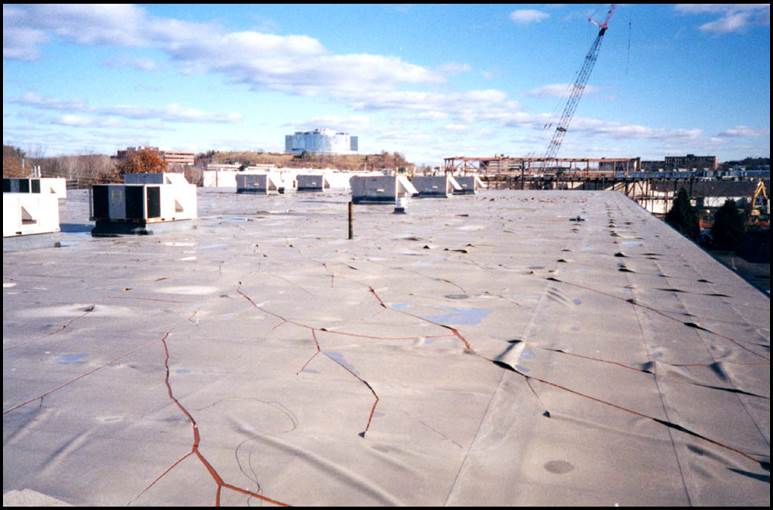
Sustainable roof system vs. sustainable roof use
Many features commonly viewed as creating a sustainable roof system are not an integral part of the assembly at all. There are two different, but interrelated, aspects regarding sustainability applied to roofs: sustainable roof system and sustainable use of the roof surface.
ASTM has adopted the following definition of sustainable roof system:
a roofing system that is designed and constructed and is maintainable throughout its service life, with an emphasis on using natural resources efficiently and preserving the environment.5
The sustainable roof system is defined primarily by its material and performance properties. These properties include thermal efficiency, structural integrity, durability and long-term performance, and suitability for intended use.
The second aspect involves sustainable use of the roof surface. Open rooftop areas make them ideal candidates for sustainable purposes, including PV installation, runoff retention, and vegetation. These components do not share the same primary purpose of the roof system—to protect the top side of the building from the weather—and are therefore not typically an integral part. They use the roof surface as a platform to perform other functions and to place additional demands on the roof system.
A roof system can be sustainable without its surface being used for sustainable purposes. A sustainable roof creates environmental benefit by reliably protecting the building for a long period. Using the roof surface for sustainable purposes does not create a sustainable roof system, in other words, placing sustainable features over a non-sustainable, non-durable roofing system is unlikely to yield positive environmental benefit. If a roofing system beneath vegetation fails prematurely, its replacement will cause substantial environmental impact.
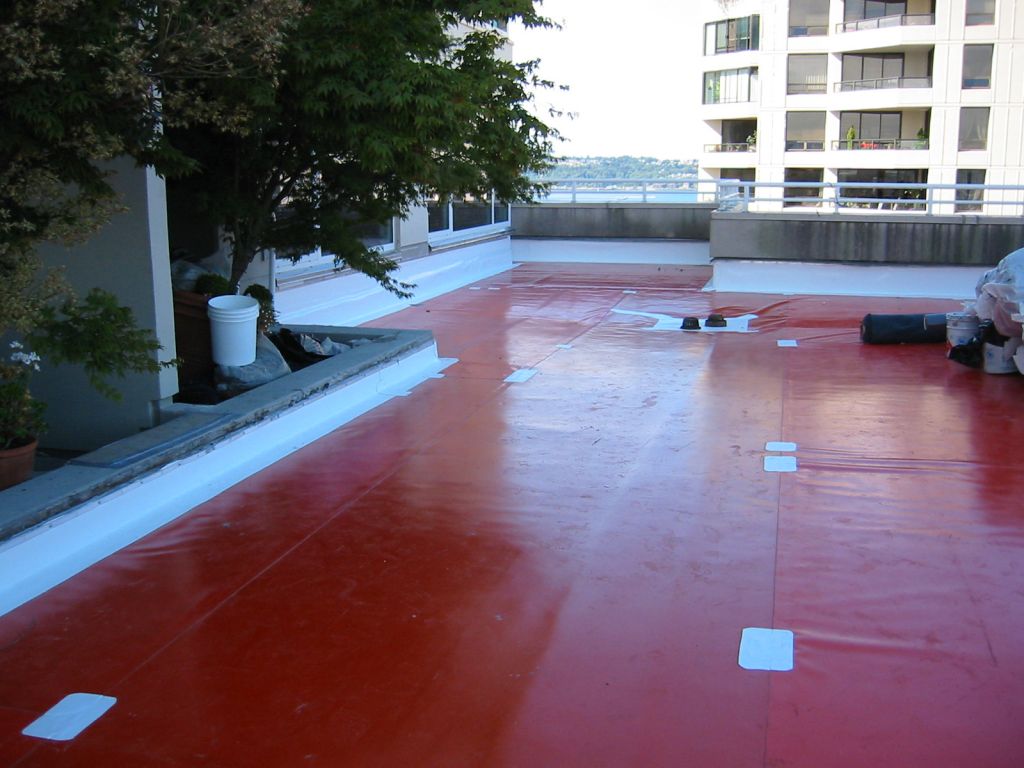
Design for durability
Sustainable roofs reduce energy use, minimize burden on the environment, and have a long service life. Extended service life requires durability, or the ability to reliably protect the building for a long time with minimal unplanned intervention. The relative sustainability of the roof can be considered to be directly proportional to its longevity.6 Other things being equal, a roof system lasting 40 years should be twice as sustainable relative to one requiring replacement after 20 years, as it will consume half the resources used to manufacture, install, and dispose of the system as the 20-year roof.
There is no consensus on how long a roof should remain serviceable to qualify as sustainable. One current industry goal for long-term performance for a roofing system is 30 years or greater.7 A longer-lived roof is likely to have lower lifecycle cost. Although not the focus of this article, economic considerations are among many factors considered in specifying a roof.
In this author’s experience, roof system design, installation, and maintenance often have greater influence in determining roof-system longevity than the actual roofing membrane or system type selected, provided the system specified has a reasonable chance of success in a given application. Even high-quality materials are not immune from misapplication or poor installation, or can succumb to neglect and abuse in-service.
Durable roofs are planned, designed, and constructed to reliably resist in-service factors such as weather, wind, water, foot traffic, and other rooftop activities, including sustainable uses. Key design, application, and maintenance aspects to provide a high chance of long-term success and, hence, improving the roof system’s overall sustainability.
Roofs have many potential enemies, including:
- rain;
- snow;
- wind;
- sun;
- hail;
- fire;
- indoor environment;
- harsh interior functions;
- building structural movement; and
- use of the roof surface for sustainable purposes.
A four-step design approach for creating a sustainable roof, with an emphasis on minimizing environmental impacts by increasing roof service life, was included in a presentation made by this author at the 2011 Building Enclosure Sustainability Symposium.8
The process can be summarized as:
1. Define roofing system service demands and environment
This step develops the understanding of demands and stresses to which the roof will be subjected. Some, such as structural loading (i.e. snow, wind, and gravity loads), rainfall rates, and climate zone, are specified by building codes such as National Building Code of Canada (NBC).
Some service demands are not specified and should be identified by the roof designer. These may include anticipated foot traffic levels and potential abuse to maintain rooftop equipment, PV arrays, and vegetation, as well as building use and indoor conditions that may affect the roof, such as indoor humidity and pressurization.
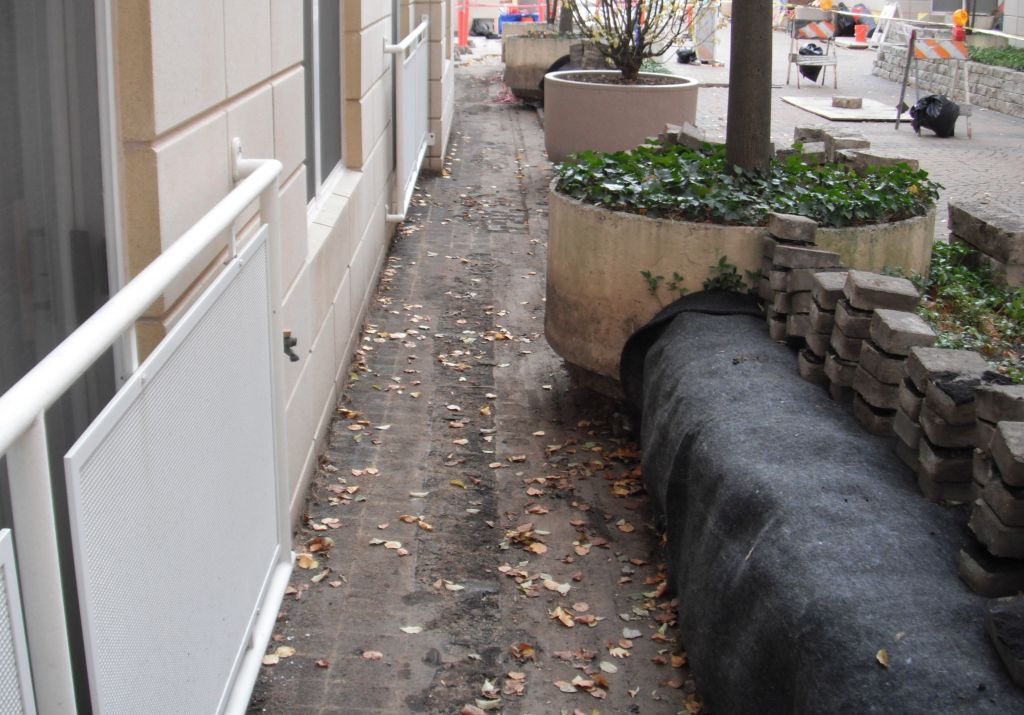
2. Establish design requirements for durability and performance
The designer determines the roof’s physical and performance properties to meet service demands and provide the functions established in the previous step. These performance properties will place constraints on the roof system and material selection. Some requirements, like wind uplift resistance and required thermal resistance (i.e. R-value), respond to criteria specified by the code, although the designer should enhance these criteria if better protection of the roof and building is afforded. Others, like determining requirements for roof deck air barrier and vapour retarder to protect the roof from the indoor environment, impact and foot-traffic resistance, drain configuration, and roof slope layout, as well as projecting the service life for the roof, are left to the roof designer’s judgment.
The process of designing and selecting a durable roofing system should consider the risk to building materials/furnishings in the event of roof failure or loss. For example, buildings used for production or storage of pharmaceuticals, expensive electronics, or data centres should be provided with a robust roofing system and should consider longer recurrence intervals for design events. As an analog, the importance factor specified by American Society of Civil Engineers (ASCE) 7, Minimum Design Loads For Buildings and Other Structures, requires increasing the structural design loads on roofs over essential facilities (i.e. hospitals, disaster shelters, or hazardous material storage), but this requirement is geared toward lifesafety as opposed to protecting the building and its contents.
3. Identify candidate systems
Based on this analysis, the designer determines a set of roofing systems meeting the design requirements, durability, and performance expectations. In this phase, compilation of data showing cradle-to-grave environmental impacts, such as embodied energy and raw material extraction, are compiled (to the extent available) to allow comparison of roofs having an otherwise similar expectation of performance and durability.
Candidate systems should have a long-term track record of satisfactory performance in the proposed environment and end-use configuration under consideration. Using a warranty to project longevity is valid only if long-term performance data supports it. Replacement of a system under warranty may reduce replacement costs, but can still be an environmental burden.
4. Select the roofing system
Selection should be based primarily on projected longevity under the intended application. The selection process should also seek the roof with the lowest quantified cradle-to-grave environmental impact. Specifying the system that best protects the building for the projected service life is of prime importance.
In performing this analysis, the designer may also consider whether the increased robustness of the roofing system and added building structure needed to support sustainable use of the roof surface is offset by its environmental benefit. For example, does the reduction in building energy consumption or urban heat island from a vegetative roof surface offset the environmental impact of manufacturing, transporting, and installing additional building structure to support the weight of vegetation? If the answer is no, reducing the building structure and removing the vegetation may be more environmentally responsible in the long term, although other political, esthetic, or end-use expectations may still demand the vegetative roof.
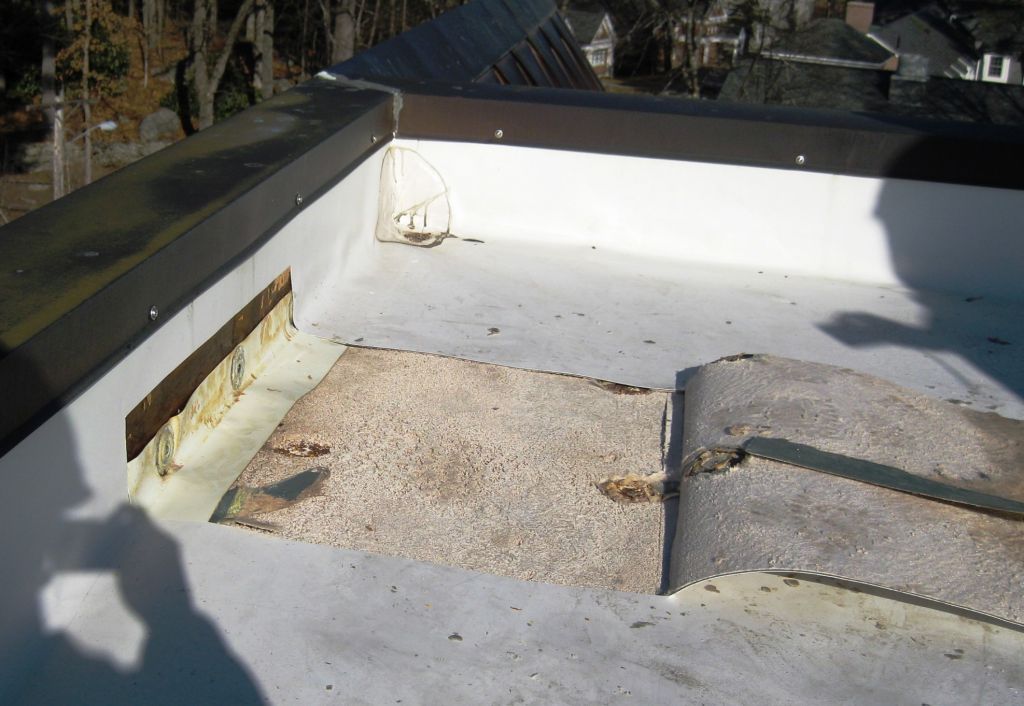
Other key considerations
A well-founded roof design can be defeated by degrading quality in the quest for short-term cost reduction, poor workmanship, improper maintenance, neglect, and abuse. The design must be faithfully executed, and the roof treated and cared for properly, in order for the roof to protect the building successfully and to realize its anticipated design life. The following should be considered by design professionals:
- be skeptical of roof design downgrades through value engineering, as these may adversely affect long-term durability and be sure longevity expectations are well-defined;
- construct the roof using properly skilled workers, and specify the installers’ qualifications—specify quality assurance/quality control tests (e.g. uplift resistance, ponded water leak detection, and electric field vector measurement leak detection tests);
- frequently inspect the installation to help ensure proper design execution;
- specify permanent leak detection systems under vegetative roofing assemblies to assist in pinpointing leaks and minimize disruption and demolition to repair them;
- beware of greenwashing by companies pushing unproven products or unfounded environmental benefits—use of such products can damage the roof or building if they fail, and adversely impact the environment during replacement and disposal of damaged materials—specify “Acceptable Materials Manufacturers” to limit acceptable roofing manufacturers to those who can provide verifiable track records for products and systems. Do not rely solely on warranties for assessing longevity; and
- make sure end-users are well versed in the roof’s operation, protection, and maintenance—specify “Operation and Maintenance Data” requirements as well as “Demonstration and Training” requirements.
Conclusion
A sustainable roof must perform its primary purpose of protecting the building reliably and for the duration of its planned service life. The potential environmental burden created by premature roofing failure, or its unplanned replacement, is difficult to quantify. However, the means to prevent these issues—by sound design and consideration of demands placed on the roof, use of time-proven materials, proper installation and oversight, and adherence to planned care throughout the roof’s service life—are well understood.
Green roofs can be only as green as the durability and performance of the underlying roof structure dictates. Downgrading the roof quality or placing primary importance on use of the roof surface for activities deemed sustainable, while overlooking the fundamental importance of the roof itself, can sacrifice roof performance and longevity. For these reasons, the emphasis of roof sustainability should be placed on the whole system.
Notes
1 See “Towards Sustainable Roofing,” Report of the CIB W083/RILEM 166-MRS Joint Committee on Roofing Materials and Systems, CIB Publication No. 271, July 2001 at cibworld.xs4all.nl/dl/publications/Publi271.pdf. (back to top)
2 For more, visit web.ornl.gov/sci/ees/etsd/btric. (back to top)
3 See K.L. Getter, et al’s, “Carbon Sequestration Potential of Extensive Green Roofs,” in Environmental Science Technology (vol. 43, no. 19.) (back to top)
4 Visit webster.com/dictionary/greenwashing. (back to top)
5 This comes from ASTM D1079–13e1, Standard Terminology Relating to Roofing and Waterproofing. (back to top)
6 See this author’s paper, “Sustainable Low-Slope Roofing–A Design Process,” which was presented at the 2011 Building Enclosure Sustainability Symposium in Pomona, California. (back to top)
7 See T. Hutchinson’s “Achieving Sustainability of a Roofing System,” from RCI Interface magazine, December 2007 issue. (back to top)
8 See Note 6. (back to top)
 Eric K. Olson, PE, is a consulting engineer with engineering firm Simpson Gumpertz & Heger (SGH) in Waltham, Massachusetts. He focuses on the investigation and evaluation of building enclosure systems, chairs the Subcommittee ASTM D08.24’s task group developing a new design guide for sustainable roofing, and secretary of ASTM D08.20 subcommittee on membrane roofing systems. Olson can be reached at ekolson@sgh.com.
Eric K. Olson, PE, is a consulting engineer with engineering firm Simpson Gumpertz & Heger (SGH) in Waltham, Massachusetts. He focuses on the investigation and evaluation of building enclosure systems, chairs the Subcommittee ASTM D08.24’s task group developing a new design guide for sustainable roofing, and secretary of ASTM D08.20 subcommittee on membrane roofing systems. Olson can be reached at ekolson@sgh.com.


